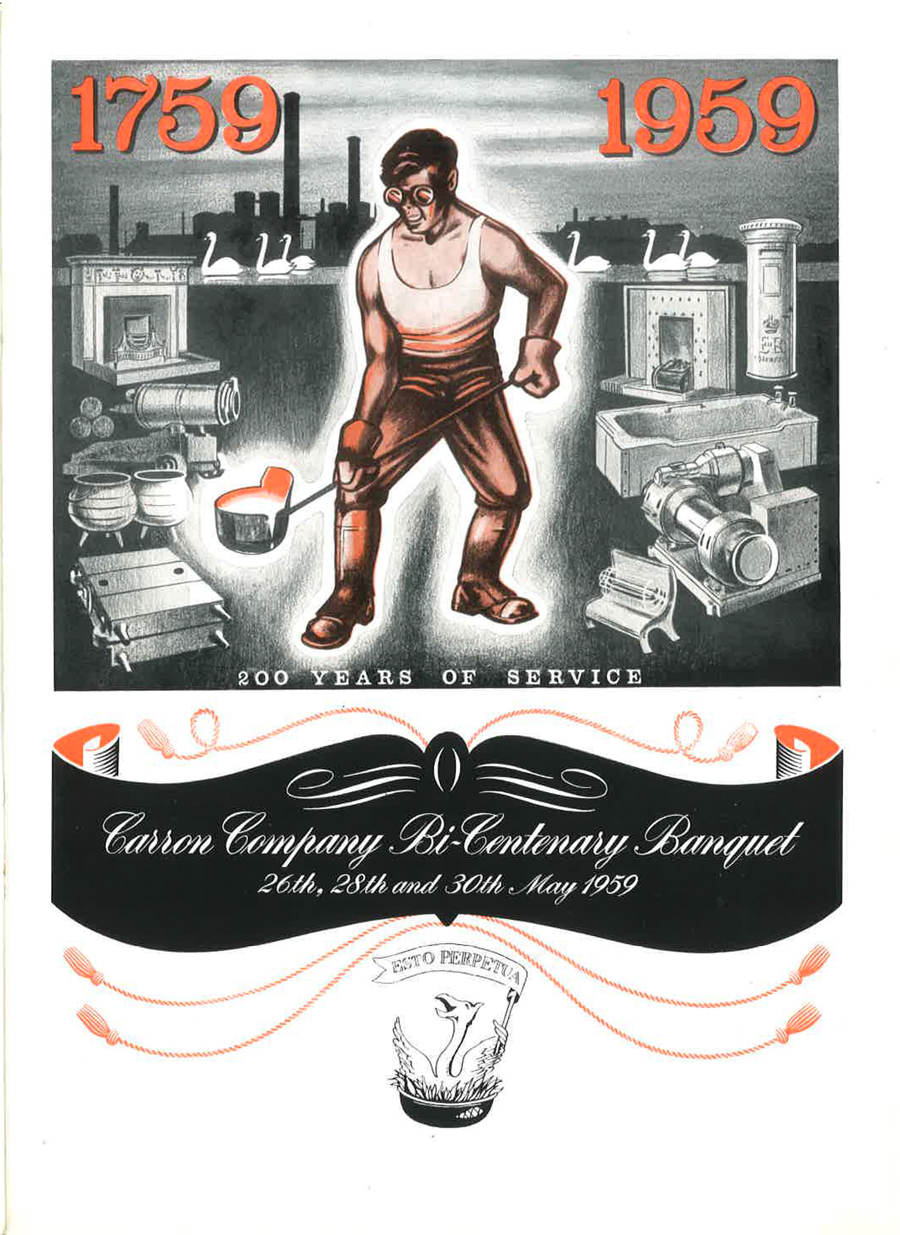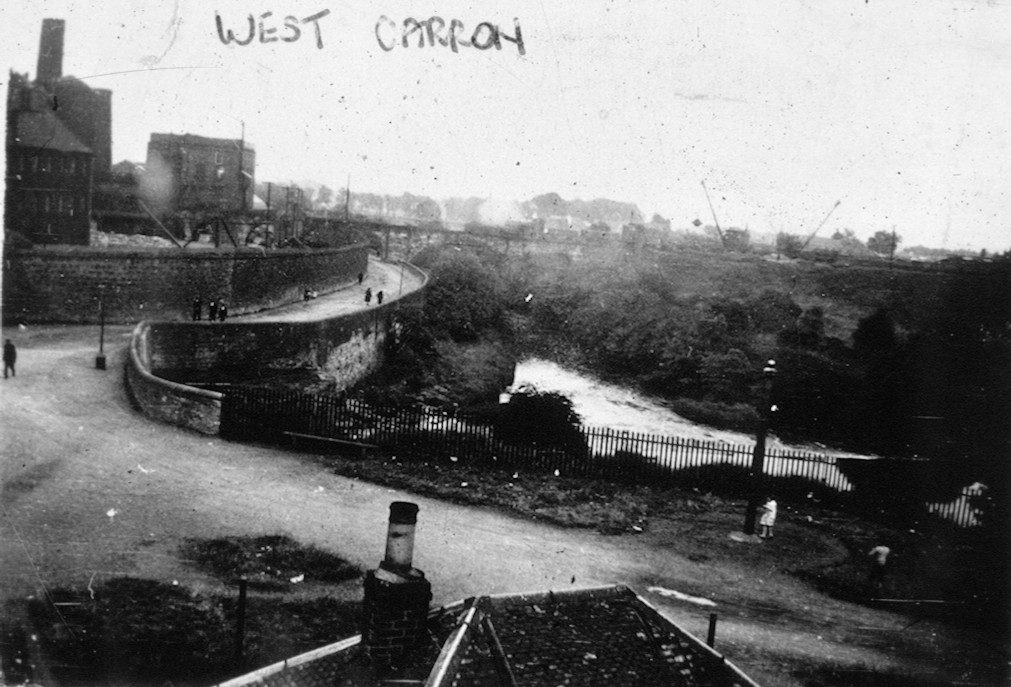The Cupola was the Carron Company's in-house magazine. Elizabeth Sutherland recalls her time working with William Brown and producing the magazine.
A cupola is a small furnace for melting pig iron that has already been produced by the larger blast furnaces.
fields['text']) echo $section->fields['text']; ?>
In the 1950s and 1960s, the publicity department of Carron Company was managed by William Brown and situated in offices under the clock tower of the office buildings, facing Falkirk Road. This part of the building is now all that remains today of the factory offices, currently housing a range of cannons, including the famous Carronade. The Falkirk archives holds a fascinating account, handwritten by William, of his recollections of life at Carron Company during the slump in the 1930s. He vividly describes the long lines of people who queued daily outside Carron, desperate for work during the Great Depression. William writes in general terms of the ‘young fourteen year old schoolboy’ who would have no expectation of further education but must get a job: times were hard and family honour must be upheld. Presumably, he was one of those boys. It is unclear what his early role in Carron was but by the 1950s he had risen to the important role of publicity manager, answerable directly to the general manager (Benjamin Payne then Eric Leaver).
The Carron Cupola
The department was a hive of industry dealing with the production of all product sales leaflets and brochures; these were stored in the attic of the office, behind the clock face. The department also organised trade fairs and conferences, but one of their greatest achievements was the production of the ‘in-house’ quarterly magazine Carron Cupola which ran from 1950-1964. A cupola is a small furnace for melting pig iron that has already been produced by the larger blast furnaces. The magazine focused on the working and social lives of Carron Company’s employees. In the foreword of the first issue, which cost thruppence, general manager Benjamin William outlined his intention that the magazine would create a ‘family spirit’, communicates developments within the company and shares sporting and social news.
Elizabeth soon found that her duties would go beyond secretarial work and remembers her time working in the publicity department with great fondness as like a “college education."
fields['text']) echo $section->fields['text']; ?>
Elizabeth Cox
William Brown’s assistant Elizabeth Sutherland (nee Cox) was also born and raised in Falkirk and left school at 14 to enter the world of work. She remembers that there was no expectation or encouragement to continue with her education though she did do a short secretarial course on leaving school. In 1957 she answered an advert to be a shorthand typist in the publicity department at Carron and joined the department. Elizabeth soon found that her duties would go beyond secretarial work and remembers her time working in the publicity department with great fondness as like a “college education.”
Valuing the Company Heritage
Elizabeth vividly remembers William Brown. He was a devoted company man who spent long hours in presenting Carron and its past in glowing terms. He lived with his mother and cared for her. William had little leisure time but was a keen amateur artist who published many of his drawings and paintings in the Cupola. The Cupola was produced ‘in-house’ with William and Elizabeth cutting and pasting the original material to be sent to the printers, Inglis Paul, in Falkirk. Elizabeth remembers William’s exacting standards and the meticulous care he took in his personal appearance and over everything the department produced. The Cupola often featured articles on the history of the works, and William and Elizabeth produced a short history of the company for the bi-centennial celebrations. Falkirk archives also holds a 500 page unpublished manuscript by William Brown, titled ‘Carron Company – the story of an enterprise with a unique place in history.’
Varied duties
Elizabeth remembers the remit of her job being very wide from the start including planning meetings and managing the “‘Women Talking” section of the Cupola which included domestic advice, fashion and popular culture reviews. She also interviewed comedian Max Bygraves, who had been stationed in Grangemouth during his service with the RAF and had performed at the Roxy in Falkirk, as well as singer Helen Shapiro.
Carron Models
Another feature of the Cupola was its use of women office employees as models. Iris Fraser, for example, frequently featured beside fires, ovens, and baths. The 1950s cliché of the ‘perfect housewife ’ was often portrayed in the pages of the Cupola. None of the women were paid for their modelling services. Instead they were given a day off to travel to the advertising agency Studio Swain in Glasgow. Elizabeth recalls that, at that time, though many women were employed in the offices, there were also many women on the shop floor working in a highly industrial setting.
The End of an Era
By 1962 Elizabeth was ready to leave Carron Company to raise her family. There was no maternity leave and she had no expectation of returning to work. William went to London as the publicity department and Cupola offices had been moved there. These later issues are noticeably different from the ones he edited with Elizabeth and their focus shifted away from community concerns. The Cupola became more like a sales brochure for the company than a celebration of social cohesion. While in London, William met his future wife. He made a brief return to Scotland around 1964 and asked Elizabeth to come back to work with him but her commitments remained with her family. William returned to London where he remained for the rest of his life. Elizabeth corresponded with him for the years until his death. As her family grew older, Elizabeth pursued further education, taking Highers at night school and eventually training as an English teacher at Callendar Park College and Stirling University. She went on to teach in Grangemouth. The ‘college education’ of the publicity department at Carron and the mentorship of William Brown gave Elizabeth the confidence in her abilities to pursue her dreams of further education.
By Lorna Swinney.

